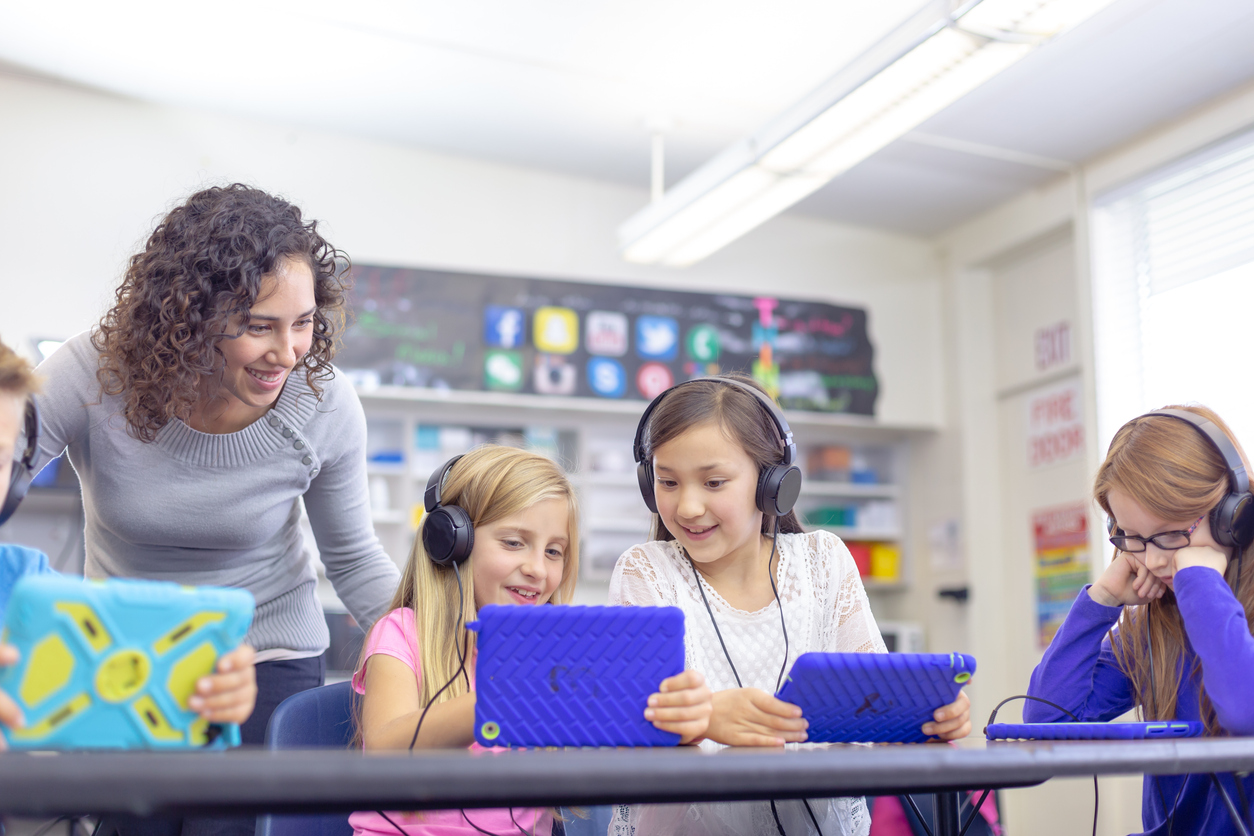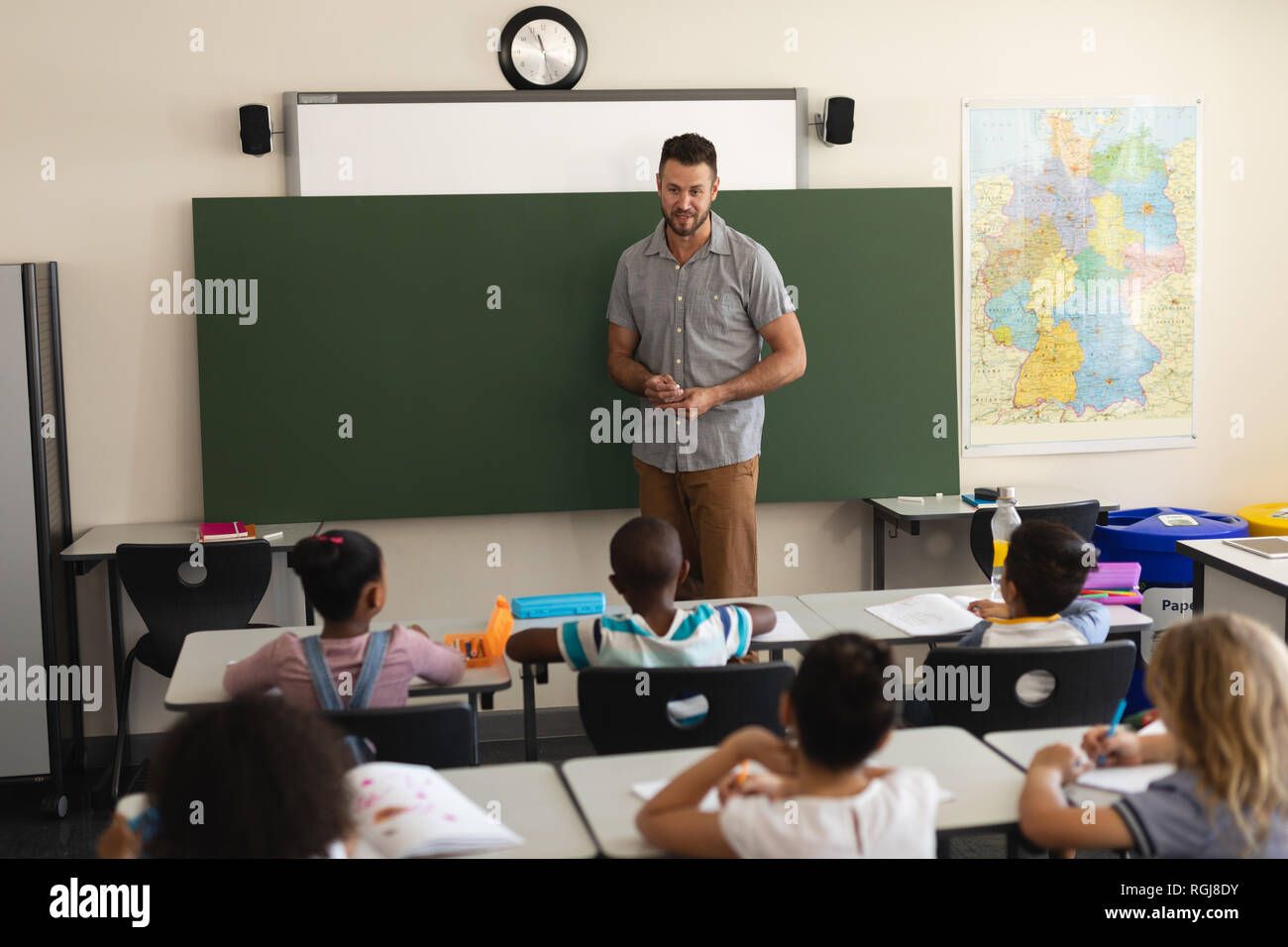Checking Out the Different Teaching Approaches in Primary Scientific Research Education And Learning Today
The landscape of primary scientific research education and learning is advancing, with numerous mentor strategies obtaining prestige in modern class. Inquiry-based understanding, hands-on experiments, and the integration of innovation are redefining exactly how educators engage young minds. Additionally, collaborative approaches and set apart guideline are being utilized to satisfy the varied requirements of pupils, improving both interaction and understanding. As we examine these techniques, concerns arise concerning their efficiency and the implications for future educational methods. What might these shifts in strategy mean for the future generation of learners?
Inquiry-Based Knowing
Inquiry-Based Understanding (IBL) is a pedagogical strategy that motivates students to check out clinical principles with wondering about, investigation, and hands-on testing. This method emphasizes the duty of students as active individuals in their learning, advertising vital reasoning and problem-solving abilities. By involving with real-world concerns, pupils become curious and motivated, which boosts their understanding of scientific concepts.
In IBL, teachers function as facilitators, directing pupils as they navigate their questions instead of delivering information straight. This student-centered method allows for differentiation, fitting different finding out designs and rates. Students develop abilities in formulating hypotheses, designing experiments, and evaluating data, which are important for scientific literacy.
Additionally, IBL promotes partnership amongst students, motivating them to share findings and concepts. This collective inquiry promotes social abilities and a feeling of area within the class. Moreover, the procedure of query urges resilience, as pupils discover to embrace failure as a tipping rock toward understanding.
Hands-On Experiments
Hands-on experiments are a crucial element of effective scientific research education, complementing the principles of inquiry-based learning. These experiments allow trainees to engage straight with scientific ideas, promoting a much deeper understanding through experiential discovering. By controling products and observing outcomes, young learners can understand abstract theories in concrete methods.
Such tasks promote essential thinking and analytical abilities, as trainees assume outcomes, conduct experiments, and assess results. This procedure encourages them to ask inquiries, refine their understanding, and establish a scientific mindset. Moreover, hands-on experiments can be tailored to varied understanding designs, making sure that all students have the chance to involve meaningfully with the content.
In addition, hands-on experiments typically encourage cooperation among peers, advertising team effort and communication skills. Operating in teams enables students to share concepts, talk about findings, and pick up from one another, which boosts their general academic experience.
Incorporating hands-on experiments into the primary science educational program not only improves the finding out environment but likewise cultivates a lifelong interest in science. By actively participating in their education, trainees are much more likely to develop a passion for scientific inquiry that extends beyond the class.

Technology Integration
Integrating technology into main science education and learning has actually ended up being significantly essential in cultivating pupil involvement and improving discovering results. Making use of digital devices, such as interactive simulations, digital labs, and academic software application, provides pupils with possibilities to check out scientific concepts in innovative means. These sources facilitate a much deeper look at this web-site understanding of intricate topics by allowing students to picture and control variables that would be not practical in a standard classroom setup.
In addition, innovation integration urges customized learning experiences. Pupils can advance at their own speed, reviewing challenging principles via multimedia resources, which provide to various discovering styles. This adaptability not just sustains individual development but also grows a sense of freedom in students.
Additionally, technology acts as a bridge to real-world science, attaching trainees with existing research study and specialist contributions. Accessibility to on the internet databases and scientific journals widens students' point of views on clinical questions and fosters essential thinking skills.
Collaborative Understanding
Collaborative knowing plays an essential role in primary scientific research education by promoting synergy and communication abilities among students. This method motivates students to work with each other, share expertise, and involve in analytical, which enhances their understanding of clinical principles. By joining team tasks, students find out to articulate their concepts, pay attention to diverse perspectives, and bargain solutions, all of which are important abilities in both real-world and academic contexts.
Research shows that collaborative understanding can cause enhanced inspiration and interaction in scientific see this research topics, as students locate satisfaction in shared experiences (primary science tuition Singapore). Additionally, this approach prepares trainees for future collaborative ventures, furnishing them with the skills essential for reliable team effort in higher education and learning and expert settings. Eventually, accepting collaborative discovering in main science education can significantly improve the learning experience and advertise a much deeper understanding of clinical inquiry
Set Apart Instruction

Separated guideline can manifest in different means, such as varying the material, procedures, or items of discovering. Instructors might utilize tiered tasks that offer differing degrees of complexity, allowing students to function at their corresponding preparedness levels. Furthermore, versatile grouping methods can assist in cooperation amongst trainees with different abilities, cultivating peer learning.
Assessment plays an important function in this approach, as it educates direction and helps educators understand each student's distinct demands. Formative analyses, such as tests and observations, can assist teachers in readjusting their methods to improve finding out end results. primary science tuition Singapore. Ultimately, by implementing set apart direction in primary scientific research education, teachers can grow a more effective and equitable learning atmosphere, encouraging all students to reach their full possibility in comprehending clinical phenomena
Final Thought
In summary, the varied teaching methods in key science education and learning, including inquiry-based knowing, hands-on experiments, technology assimilation, collective learning, and differentiated direction, jointly add to an extra effective discovering environment. These techniques promote important thinking, analytical abilities, and a deeper comprehension of clinical principles. By applying these techniques, instructors can create appealing and my review here encouraging classrooms that resolve the varied needs of students, ultimately promoting a long-lasting passion in science and boosting academic accomplishment.
Inquiry-Based Discovering (IBL) is an instructional strategy that urges pupils to check out scientific principles via wondering about, examination, and hands-on testing.Collective knowing plays a vital role in key scientific research education by cultivating synergy and communication skills amongst trainees.Research shows that collective learning can lead to increased inspiration and interaction in scientific research topics, as students locate pleasure in shared experiences.In cultivating an inclusive learning setting, differentiated guideline emerges as a key approach to fit the diverse demands and capacities of pupils in main science education. Ultimately, by implementing set apart instruction in main scientific research education and learning, instructors can cultivate a much more equitable and reliable discovering environment, equipping all students to reach their full possibility in comprehending clinical phenomena.